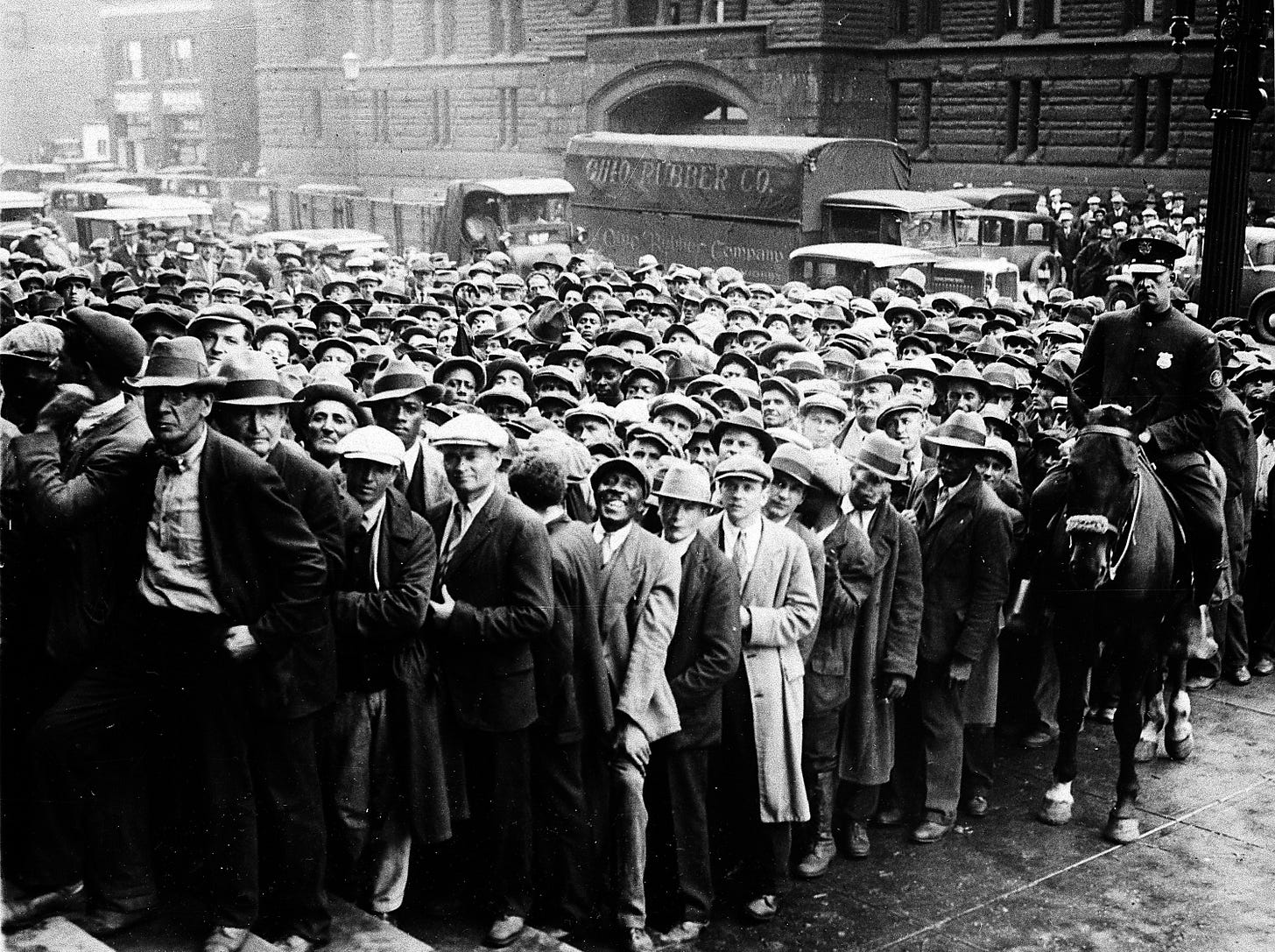The Great Depression 2.0? Why 2025 Feels Uncomfortably Familiar
History doesn’t repeat, but it sure knows how to rhyme, here's why our economic reality might be echoing the darkest days of the 1930s.
“When the music stops, in terms of liquidity, things will be complicated.” - Chuck Prince, ex-CEO of Citigroup, 2007
We’ve heard versions of this before. But this time, it's different. And that’s exactly why it might be worse.
From Dust Bowls to Digital Bank Runs
The 1930s were marked by food lines, failed banks, and catastrophic unemployment. Fast forward to 2025, and while the world looks different on the surface, with AI, digital currencies, and stock market apps on every phone, the structural weaknesses in the economy are eerily similar.
Then: Over-leveraged speculation, cheap credit, and a stock market bubble.
Now: Record corporate and sovereign debt, meme stock mania, and zombie companies fueled by zero-interest-rate policies (ZIRP) that have finally come home to roost.
Central Banks Are Cornered
Back then, the Federal Reserve raised rates into weakness. Sound familiar?
In the past 24 months, central banks globally have tried to “normalize” interest rates, only to find themselves breaking banks (SVB, Credit Suisse), squeezing governments with ballooning debt repayments, and leaving households drowning under variable mortgage burdens.
Meanwhile, inflation is proving far less “transitory” than promised, exactly what happened in the early 1930s when monetary contraction crushed demand.
A Crisis of Confidence, Again
Confidence in institutions, whether banks, governments, or currencies, evaporated during the Depression. Today, trust is fracturing again. De-dollarization. Bank runs (now digital). Political instability. Social unrest.
Sound extreme? Consider:
Over 60% of Americans now live paycheck to paycheck.
Global youth unemployment is soaring.
Billionaires are hoarding hard assets, while average citizens chase yield in increasingly risky places.
This isn’t just a soft patch. It’s a fracture in the system.
Is History About to Repeat?
The Great Depression didn’t begin in one day, it was a rolling crisis. First stocks, then banks, then governments. We may be living through a slow-motion sequel, only this time it’s global, interconnected, and potentially more severe.
But there’s still time.
The key lessons from the 1930s?
Protect your savings.
Understand real value.
Don’t wait for the headlines to catch up to reality.
Because when the “Everything Bubble” bursts, hindsight won’t save you.


